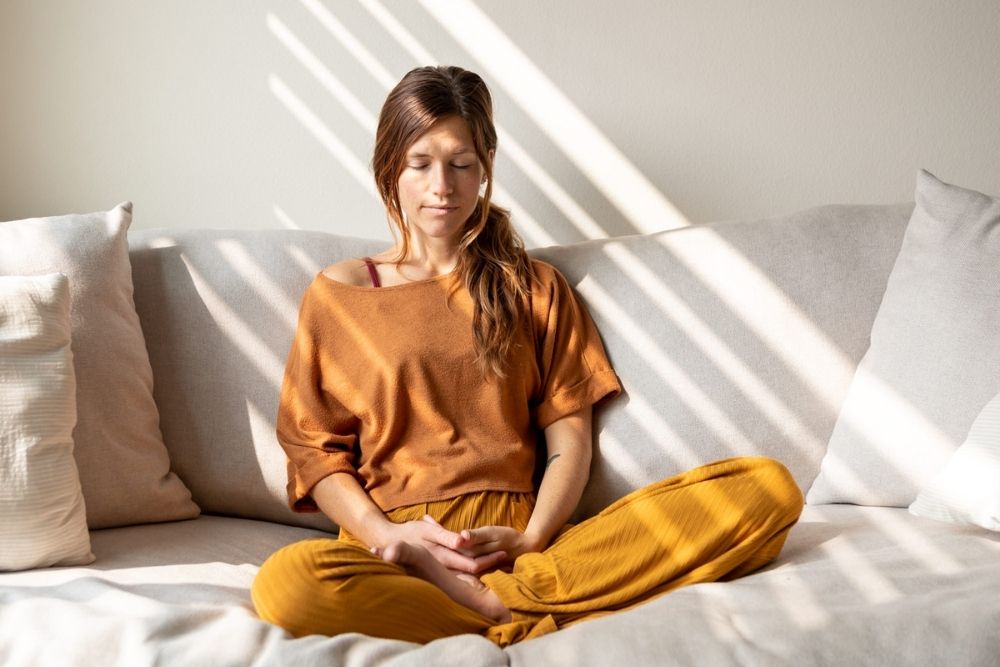In the West, we generally understand yoga as a practice that helps our bodies stay fit and our minds stay more or less relaxed. While we are extensively aware of postures and breath—we’re less aware that these two factors are really just a scratch on the surface of the holistic system that Yoga really is.
Unless we are driven by glimpses of yoga philosophy in class, or decide to enroll in a Yoga Teacher Training program, we may not come to realize just how vast the ideology of yoga is. We view asana (yoga poses), including Savasana, as the destination, when really they’re just a means to a different sort of “end.”
Yoga is the Sanskrit word for “union.” We can understand union in a number of ways, but for the intent of this post can think of it as oneness, or finding the sameness in our individuality and the rest of the living, breathing world. More than a class we squeeze in between work and dinner plans — yoga is a science of living. And it has been around for over 10,000 years.
The Yoga Sutras
Across the expansive timeline of yoga, there have been several sages (spiritual masters) who have cognized the philosophy of yoga in such a way that the larger world can not only learn, but apply the teachings to their own life. One of those sages was Patanjali of ancient India, who is believed to have written several prominent sacred texts — one being the very renowned Yoga Sutras.
The Yoga Sutras are known as the “guidebook” of one style of yoga called Raja Yoga, or royal yoga, written around 200 CE. Prior to the Yoga Sutras, yogic wisdom was mostly handed down through storytelling and was largely unorganized. The Yoga Sutras were the first attempt to systemize yoga.
Within the total 196 sutras (sutras meaning lessons or discourses), are what Patanjali is best known for: The 8 Limbs of Yoga. A majority of the yoga wisdom you hear in yoga classes today is likely derived from the 8 Limbs.

The 8 Limbs of Yoga
As mentioned, Patanjali’s Yoga Sutras are a system. So we might ask: a system purposed for what?
Speaking rather generally — the 8 Limbs provide a system for reaching bliss, or enlightenment. Each limb encompasses a massive practice in itself, two of which you’re already very familiar with: postures (Asana) and breath (pranayama). As we expand into each limb, we move closer to yoga, union, oneness.
First Limb: Yamas
The Yamas enclose practices, or disciplines, that teach us to cope with the world and reality . The five Yamas provide principles to live by, to help us relate to the universe with wisdom. The five Yamas are:
- Ahimsa: Non-violence
- Satya: Truthfulness
- Asteya: Non-stealing
- Brahmacharya: Energy conservation
- Aparigraha: Non-hoarding
Second Limb: Niyamas
The Niyamas are considered personal observances, laws, and rules. While the Yamas deliver ideas as to how we relate to the world at large, the Niyamas teach us about how to succeed introspectively.
- Saucha: Cleanliness
- Santosha: Contentment
- Tapas: Heat
- Svadhyaya: Self-study
- Isvarapranidhana: Surrender
Third Limb: Asana
Of all of the limbs, this is the one that our culture most often associates with yoga. Asana entails much of what you already know: putting the body into physical postures which enhance strength, balance, flexibility, and overall health. Asana is the practice of keeping the body, our “vehicle,” in the best health possible, so that we may be able to approach spirituality and personal growth with a clear mind.
Asana is not just about strong handstands and flexible hamstrings. Traditionally speaking, yoga was never the one-and-only practice. In fact, asana is only a preparatory practice. Yoga was invented to prepare the body and mind to be still for meditation.
Fourth Limb: Pranayama
Pranayama is the control of breath. By engaging in pranayama, we manage the flow of prana, or life-force, in the body. Breath control works in tandem with the physical posture to create optimum wellbeing. The asana, through hard work and discipline creates tapas, heat, which purifies the body. The pranayama, depending on the type, can also create heat, or calm, in the body to improve the function of the nervous system and respiratory system. When breath and posture come together, we create the calm necessary for successful meditation.
Fifth Limb: Pratyahara
Pratyahara asks us to sever the connection from our senses, to external objects. When the senses do not depend on outside stimulants, we have pratyahara (restraint). If you have ever had a deeply meditative experience, you have inevitably experienced pratyahara because you were absorbed in meditation as opposed to the senses.
Sixth Limb: Dharana
The concept of Dharana is the practice of focused concentration and closely relates to the work of pratyahara. Pratyahara comes first, as it takes sensory withdrawal in order to focus successfully in Dharana. Then, there’s channeling your focus on the breath, a specific visualization, or a physical object (such as a candle flame), to reach Dharana.
Seventh Limb: Dhyana
Dhyana takes the meditative state and applies it towards contemplation of the Divine (or your preferred alternative). The philosophy assumes that whatever object we meditate upon, our mind becomes that object. If we meditate on compassion, we become compassion. Traditionally dhyana is an absorbed practice of devotion towards something greater.
Eigth Limb: Samadhi
At last, eight limbs later, we reach samadhi, bliss. Enlightenment is the final phase of Patanjalic philosophy. If you recall the previous limbs, you can see that the eight limbs journey from a physical plane to the internal plane, culminating in infinite bliss. Another way of thinking about the eighth limb is simply reaching the state of yoga, unity with all things.

Practicing the 8 Limbs
While you could follow the Eight Limbed Path consecutively, it’s not necessarily intended to be practiced that way. Bits and pieces of each limb can be practiced simultaneously, and out of order. Everyone has their own unique journey on the Eight Limbed Path, depending on their life circumstances.
However, it is important to know that the limbs work with each other. For example, asana comes before pratyahara, because soothing the physical body can make the sensory withdrawal more accessible. Similarly, it would be hard to start with samadhi — if it was that easy, we all would have chosen enlightenment a long time ago.
The best way to practice the 8 Limbs is to consistently engage with a little bit of everything. But here are some recommendations for digging deeper:
- Pick one yama to practice for a week — journal on it, write it on your mirror and keep it top of mind as you navigate your life.
- Do the same, but with one niyama.
- Commit to a regular asana practice. See if you can practice under the awareness that yoga poses are really a small fraction of what we’re doing within the larger system of yoga.
- Add a gentle breath practice to your daily routine. Start or end the day with 5-minutes of your favorite breath technique.
- Find a meditation technique that you can show up to regularly. By regularly meditating, you’re practice pratyahara, dharana, and dhyana.
When it comes to the 8 Limbs of Yoga, the biggest takeaway is that yoga is simply more expansive than discussed or practiced in the West. But the magic of yoga is that—if you stick with it—one limb will lead you to another. Because that’s how yoga is designed—it’s designed to connect us. Not just to other facets of the teachings, but to the entire universe, of which we are an inherent part.
Want to learn more about the Vedic teachings and these 8 limbs? Join us for our next Online Yoga Teacher Training and take your yoga practice to the next level.

Devon Barrow is a yoga teacher for Ohana Yoga + Barre, our amazing social media manager, and a talented teacher for the YTT program. Yoga has been a part of Devon’s life since she was nine years old and continues to be her agent of healing and health. You’ll find both creativity of the physical body and the power of mindfulness in her classes.